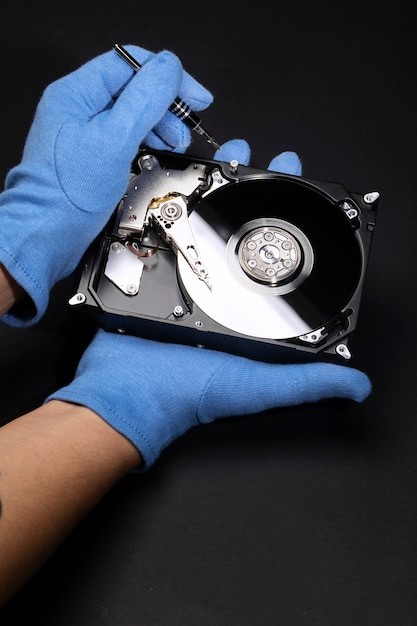Data loss due to a corrupted hard drive can be a nightmare for individuals and businesses. Whether it’s a mechanical failure, bad sectors, or file system corruption, the prospect of losing critical data can be distressing. However, there is hope. In this blog, we’ll explore the common causes of hard drive corruption, methods for data recovery, and best practices to increase your chances of successful data retrieval.
Understanding Hard Drive Corruption:
Hard drive corruption can occur for various reasons, including:
- Physical Damage: This can be caused by a drop, impact, or other physical trauma to the hard drive, resulting in mechanical failures.
- Bad Sectors: Over time, hard drives can develop bad sectors, making data inaccessible or corrupting it.
- File System Errors: Corruption in the file system, which is responsible for organizing and managing data on the drive, can lead to data loss.
- Virus or Malware Infections: Infections can corrupt files, making them inaccessible or damaging the file structure.
- Sudden Power Loss: A power outage or improper shutdown can lead to file system errors and data corruption.
Methods for Recovering Data from Corrupted Hard Drives:
- Use Data Recovery Software:
Data recovery software is often the first choice for attempting data recovery from a corrupted hard drive. These tools are designed to scan the drive for lost or damaged data and can be effective in some cases.
Pros: User-friendly, cost-effective, and can recover accidentally deleted files or data lost due to file system errors.
Cons: Limited effectiveness in cases of severe physical damage to the drive.
- Professional Data Recovery Services:
Professional data recovery services specialize in recovering data from severely damaged hard drives. They have advanced equipment and expertise to handle complex data loss scenarios.
Pros: High success rate, suitable for physically damaged drives, and can recover data that software tools cannot.
Cons: Can be costly, and recovery may take time.
- Disk Imaging:
Disk imaging involves creating a bit-by-bit copy of the corrupted drive onto a healthy drive. This preserves the original drive’s data, allowing for recovery attempts without risking further damage.
Pros: Minimizes risk to the original drive and allows multiple recovery attempts.
Cons: Requires a healthy drive of equal or larger capacity and can be time-consuming.
- Check File System Errors:
If the corruption is due to file system errors, running built-in tools like Check Disk (chkdsk) on Windows or Disk Utility on macOS can help repair the file system and recover data.
Pros: Built-in and easily accessible.
Cons: Limited effectiveness for severe physical damage.
Best Practices for Data Recovery from Corrupted Hard Drives:
- Stop Using the Drive: If you suspect hard drive corruption, cease using the drive immediately. Continued use can worsen the damage and reduce the chances of recovery.
- Back Up Data: If possible, create a backup of the corrupted drive before attempting any recovery. This ensures you have a copy of the data in case recovery efforts fail.
- Avoid DIY Repairs: Opening the drive or attempting DIY repairs can further damage the hard drive. It’s best left to professionals.
- Consult a Professional: For valuable or critical data, consult a professional data recovery service. They have the expertise and tools to handle complex cases.
- Use Reliable Software: If using data recovery software, choose a reputable and reliable tool to ensure data safety and increase the chances of recovery.
- Keep the Drive Cool: Heat can exacerbate hard drive problems. Ensure the drive remains cool during the recovery process.
In Conclusion:
Recovering data from a corrupted hard drive can be challenging, but it’s not impossible. The approach you choose depends on the cause and severity of the corruption, as well as the value of the data. It’s crucial to act swiftly, make a backup if possible, and consider professional data recovery service help for the best chances of successful data recovery. Remember that data recovery is not guaranteed, so maintaining regular backups is the best practice for safeguarding your valuable information.

